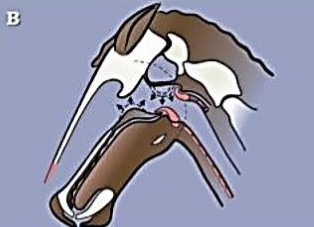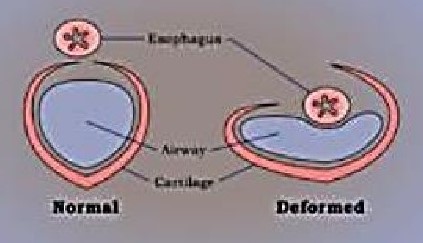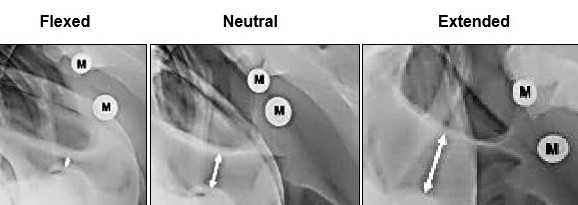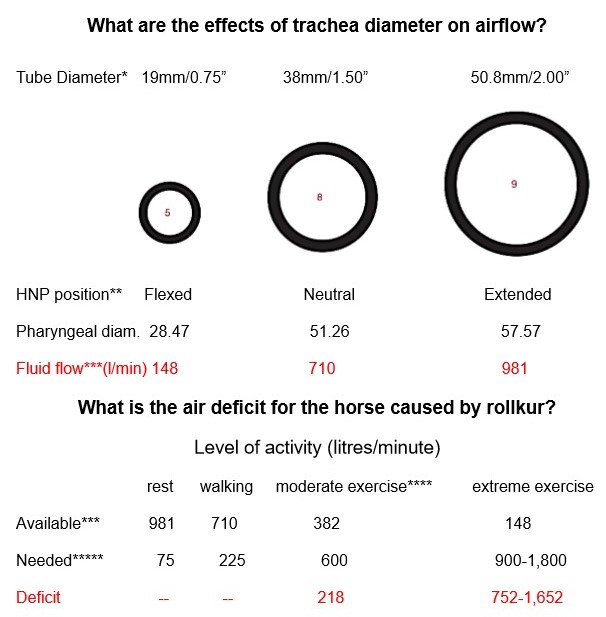Equinamity-A Revolution in Horse and Rider Training



The following image and table shows what happens to the trachea when the horse’s head and neck are moved from flexion to neutral to extended.
“Objective classification of different head and neck positions and their influence on the radiographic pharyngeal diameter in sport horses”; by Li-mei Go1*† , Ann Kristin Barton1,2† and Bernhard Ohnesorge BMC Veterinary Research 2014, http://www.biomedcentral.com/1746-6148/10/118
Author’s note: “Lateral radiographs of the head taken in three head and neck positions/hnp. M are the metallic markers used to calculate magnification. Left image: flexed hnp; middle image: neutral hnp; right image: extended hnp.”


The effect of changes in trachea diameter are shown next.


Cylindric tube resistance (R) can be calculated using the following formula (n = gas viscosity; L = length of trachea; r = radius of trachea):
R = (8 × nL) ÷ r 4
Gas viscosity, which affects the pressure:flow relationship, is constant. Because the radius is to the fourth power, a small difference in airway radius has a major impact on airway resistance. A 20% decrease in the airway radius doubles airflow resistance. In resting horses, two-thirds of the total airflow resistance during inspiration and expiration is in the upper airway.
During inspiration, negative pressure causes unsupported tissue to be drawn into the airway, resulting in upper airway narrowing; thus upper airway resistance during exercise becomes more than 80% of the total airflow resistance. During expiration while a horse exercises, upper airway resistance accounts for approximately 50% of the total airflow resistance. This is because the airway diameter is enlarged by positive pressure.
Most mammals can breathe by mouth during exercise. This provides a low-resistance pathway to accommodate the greater airflow requirement and thereby minimizing the work of breathing. However, the anatomic relationship of the larynx and caudal soft palate makes horses obligate nasal breathers. During exercise, the 20-fold increase in airflow while breathing must occur through the nose.
In resting horses, air entering the upper airway turns approximately 90 degrees to flow from the nasal passage into the trachea. During normal exercise, most horses straighten their head and neck. This increases the angle of the pharynx through which air flows and thereby reduces the work of breathing. Straightening of the airway allows a more direct route to the lungs. It also tends to stretch upper airway tissue, making it more resistant to collapse.
In some equestrian disciplines, horses carry their heads and necks in extended or flexed positions. For example, Thoroughbreds are raced with their head and neck extended. Whereas the head and neck are often flexed in Standardbreds and in sporting events such as show jumping and dressage.
Clinical signs of obstructive airway disease are often more evident when a horse’s head and neck are flexed. It has been demonstrated that when a horse’s head and neck are flexed, upper airway impedance is twice that of a horse exercising with its head extended. Head and neck flexion not only increases the work of breathing but also makes the upper airway tissue more prone to dynamic collapse”.
The next post analyzes the effect of increased speed on the trachea.